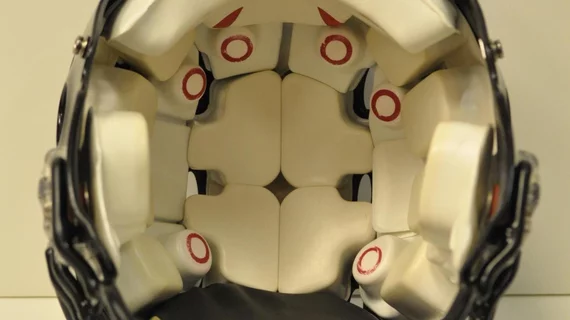Playing youth football may alter brain development
One season of football may cause alterations in the brain development of younger players, according to research presented Monday, Nov. 26 at RSNA 2018 in Chicago.
“This research demonstrates that playing a season of contact sports may affect normal gray matter pruning in high school and youth football players,” said Gowtham Krishnan Murugesan, research assistant in the department of radiology at UT Southwestern Medical Center in Dallas, Texas, in an RSNA release.
In the study, researchers included 60 youth and high school football players with no history of developmental, neurological or psychiatric abnormalities and no concussions before or during the football season. To test if exposure to repetitive head impacts affected normal brain pruning, each player was outfitted with a Head Impact Telemetry System (HITS) helmet. This customized helmet is lined with accelerometers or sensors which measure impact data to determine the concussion risk of each player.
Players were split into two groups based on risk of cumulative head impact exposure: Twenty-four high-impact players and 36 in the low-impact group. Players underwent pre- and post-season fMRI scans, and Murugesan et al. analyzed power changes within five areas of the individual’s default mode networks (DMNs).
In these networks, which include structures dedicated to processing emotions, results showed increases in power and gray matter volume in the frontal DMN for the high-impact cohort.
“Disruption in normal pruning has been shown to be related to weaker connections between different parts of the brain,” Murugesan said in the same release. “Our study has found a significant decrease in gray matter pruning in the frontal default mode network, which is involved in higher cognitive functions, such as the planning and controlling of social behaviors.”
In another study, Wake Forest University in Winston-Salem, North Carolina researchers used biomechanical data from the football players and found a majority of head impact happened during practice. Murugesan suggested low- or no-impact drills could reduce the overall incidence of head trauma.

